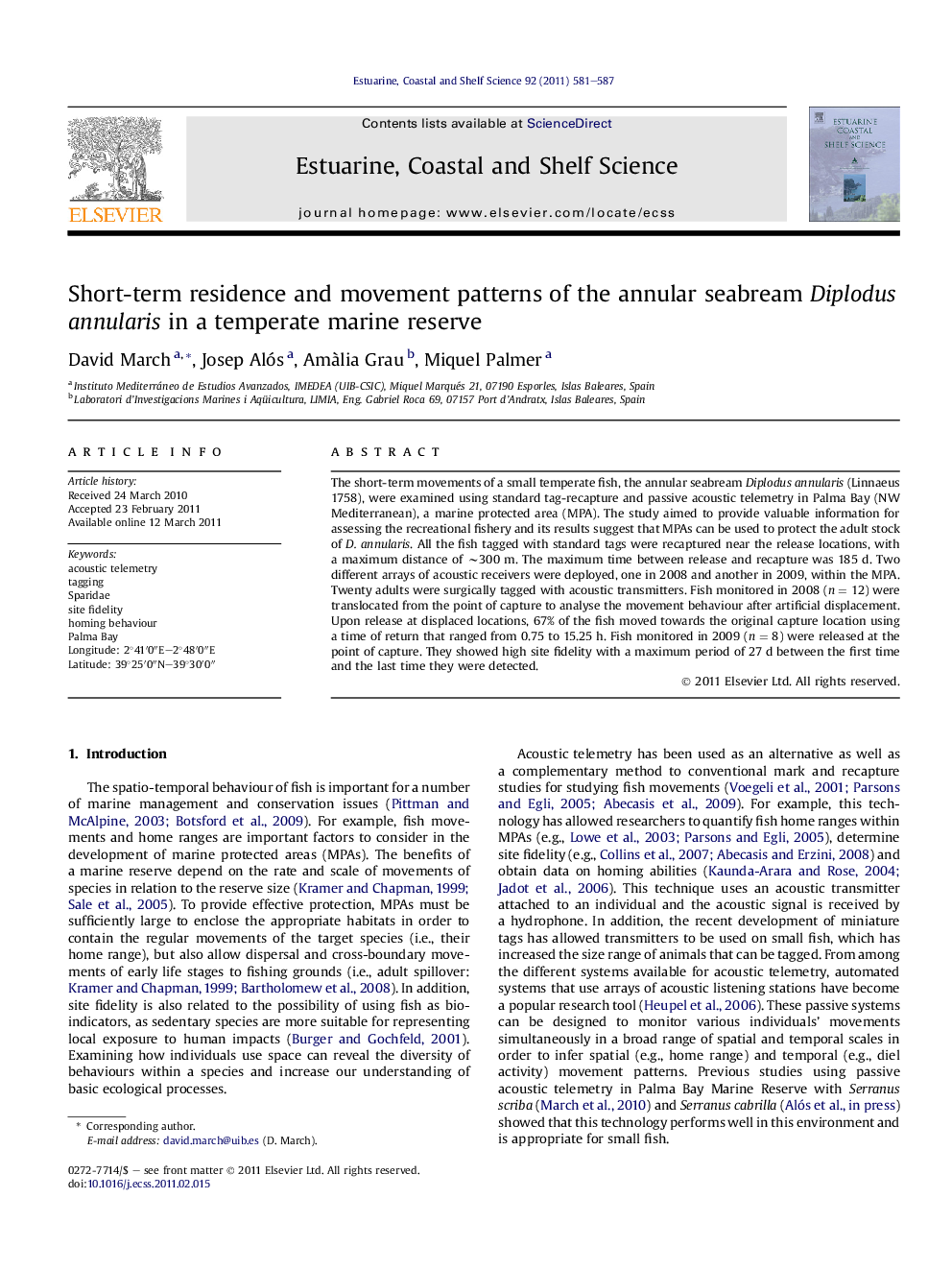| Article ID | Journal | Published Year | Pages | File Type |
|---|---|---|---|---|
| 4540487 | Estuarine, Coastal and Shelf Science | 2011 | 7 Pages |
The short-term movements of a small temperate fish, the annular seabream Diplodus annularis (Linnaeus 1758), were examined using standard tag-recapture and passive acoustic telemetry in Palma Bay (NW Mediterranean), a marine protected area (MPA). The study aimed to provide valuable information for assessing the recreational fishery and its results suggest that MPAs can be used to protect the adult stock of D. annularis. All the fish tagged with standard tags were recaptured near the release locations, with a maximum distance of ∼300 m. The maximum time between release and recapture was 185 d. Two different arrays of acoustic receivers were deployed, one in 2008 and another in 2009, within the MPA. Twenty adults were surgically tagged with acoustic transmitters. Fish monitored in 2008 (n = 12) were translocated from the point of capture to analyse the movement behaviour after artificial displacement. Upon release at displaced locations, 67% of the fish moved towards the original capture location using a time of return that ranged from 0.75 to 15.25 h. Fish monitored in 2009 (n = 8) were released at the point of capture. They showed high site fidelity with a maximum period of 27 d between the first time and the last time they were detected.
► We examine movement patterns of Diplodus annularis in a temperate marine reserve. ► We conduct tag-recapture and acoustic telemetry experiments. ► 67% of displaced fish move towards original capture location. ► Non-displaced fish exhibit high site fidelity. ► Results provide useful information for the recreational fishery management.
